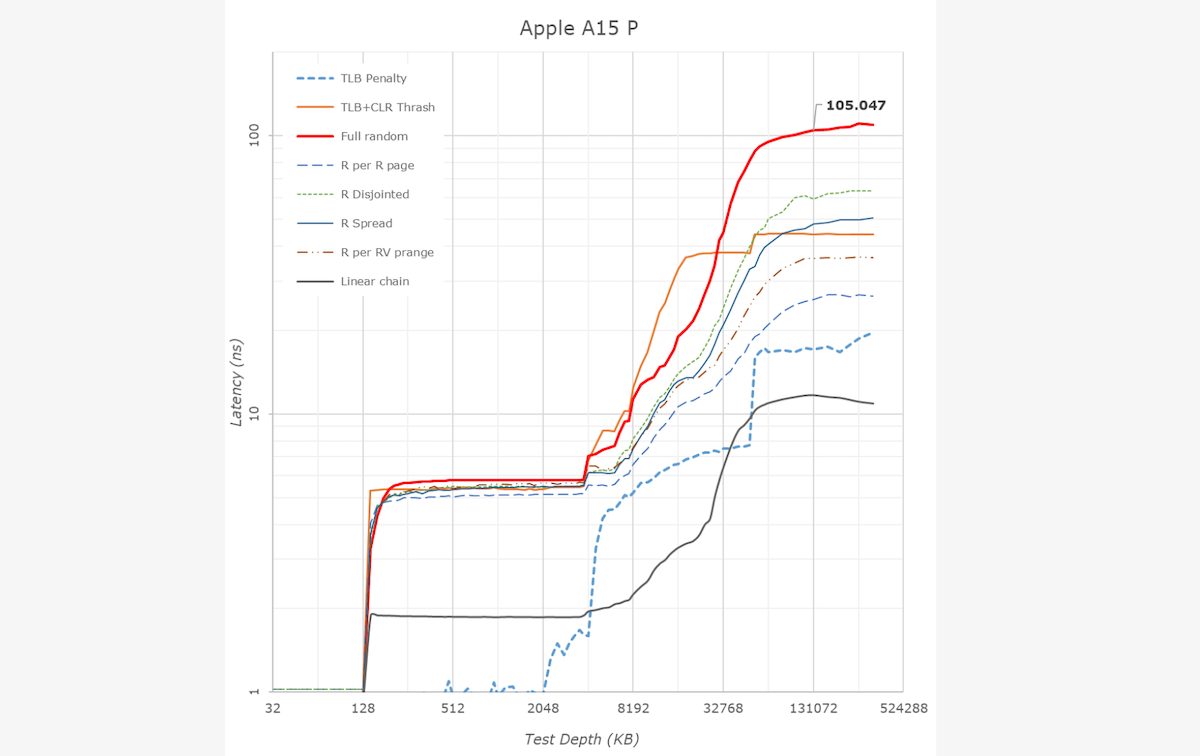The latest flagship iPhone 13 series is powered by the new A15 Bionic chip which is an upgrade of an already high-performing processor, the A14 Bionic chip. To determine the legitimacy of Apple’s claims about the new A15 SoC, Andrei Frumusanu of Anand Tech put the processor to test and found that it indeed delivers fast performance and incredible efficiency.

Built on a 5nm process, the new A15 SoC is a 6-core chip with 2 high-performance cores and 4 high-efficiency cores. In comparison to the A14 Bionic chip, the new chip has an upgraded Neural Engine which is capable of 15.8 trillion operations per second, and an improved system cache that is twice the size of the predecessor. Apple has also included the following changes in the A15 Bionic chip:
- New ISP
- New display engine
- New video decoder
- New video encoder
- Wider lossy compression support
Apple markets the new mobile processor as having a 50% faster CPU than the competition, and the 4-core GPU is 30% faster and 5-core GPU is 50% faster than the competition. Here are the complete details of the A15 SoC performance and efficiency metrics.
A 15 Bionic chip’s CPU microarchitecture – Performance cores and Efficiency cores
The single-core frequency reaches up to 3240 MHZ which is an 8% increase from 2998MHz of the A14 chip. The operating frequency of the A15 multi-core hits 3180MHz which is a 10% increase from 2890MHz of the previous chip.
The E-cores of the A15 are now able to clock up to 2016MHz, a 10.5% increase over the A14’s cores. The frequency here is independent of the performance cores, as in the number of threads in the cluster doesn’t affect the other cluster, or vice-versa. Apple has done some more interesting changes to the little cores this generation, which we’ll come to in a bit.
The test revealed that A15 indeed has 32MB double the system cache than A14, as claimed by Apple. Although the efficiency cores have almost the same cache sizes (64KB L1D’s and 4MB shared L2’s), they have faster DRAM access, “with latencies now at around 130ns versus the +215ns on the A14.”

The review also touches upon the performance comparisons between A15 and competition like Snapdragon 888 and details how A15 is 62%, more than what Apple had claimed. Despite the performance increase, the efficiency is the biggest improvement in these chips.
Compared to the competition, the A15 isn’t +50 faster as Apple claims, but rather +62% faster. While Apple’s larger cores are more power hungry, they’re still a lot more energy efficient. Granted, we are seeing a process node disparity in favour of Apple. The performance and efficiency of the A15 E-cores also put to shame the rest of the pack. The extremely competent performance of the 4 efficiency cores alongside the leading performance of the 2 big cores explain the significantly better multi-threaded performance than the 1+3+4 setups of the competition.
Frumusanu concludes that the CPU microarchitecture of the new A15 Bionic chip is not very different from last year’s A14 Bionic chip. He expected Apple to include the new Armv9 ISA in the new processor and factors like the COVID-19 pandemic, and the departure of key engineers might have been responsible for that. With that said, the A15’s CPU delivers incredible performance and efficiency, even better than the A14 Bionic chip.
Read More: